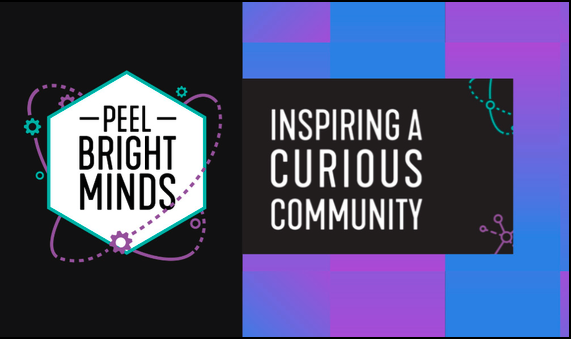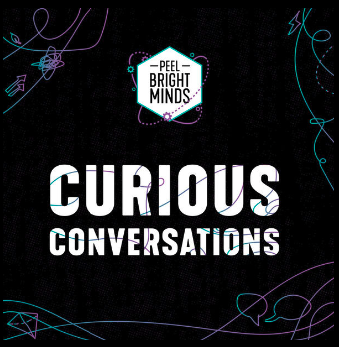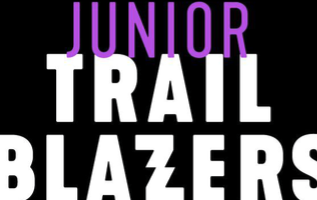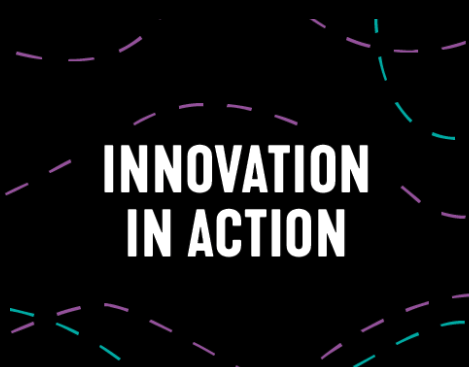A
A
A
Peel Bright Minds exists to:
Promote the STEM agenda, citizen science and their benefits:
- Connect young people to STEM activities
- Promote the value of STEM to the community broadly
Encourage an aspirant culture amount people of all background, ages and abilities in the Peel Region:
- Promote opportunities for engagement in the citizen science
- Celebrate opportunities for engagement in citizen science,
Facilitate collaborate among regional stakeholders:
- Communicate and celebrate the science agenda and research already being undertaken
- Identify and connect relevant research opportunities with regional challenges or prospects
- Identify the skills linking STEM with creative pursuits and entrepreneurship, then explore how to enhance the transference of these skills across sectors in the Peel region.
About Peel Bright Minds
CURRENT SITUATION IN PEEL
- Technology and jobs are changing at a rapid rate
- Peel people will need to adapt to have the necessary skills and characteristics for the future workforfce
- Engagement, education and capability building in Science, Technology, Engineering and Maths (STEM) aknowledgement as important for the future jobs
- White some people are highly engaged, many people do not have positive perceptions or engagement with STEM
- There are many existing assets and actors in STEM, but they are not always well connected and promoted
- The lack of engagement/understanding of STEM also contributes so a limited use of evidence based decision making in organisations.
PEEL BRIGHT MINDS’ VISION
A community that…
- Is curious and inspired to engage in lifelong learning
- Has positive perceptions and increased knowledge of STEM
- Is well prepared to regularly up skill, re-skill and change jobs in the future workforce
- Uses their knowledge to benefit the region’s natural environment, community and economy
A region that…
- Is characterised by organisations that embrace evidence-based decisions making.
- Is an attractive place for relevant and high quality scientific research to be considered; and for Innovative industries and businesses to establish & employ local people
- Has a diversified economy driver knowledge of workers
PEEL BRIGHT MINDS’ ROLE
Promote the STEM agenda, citizen science and their benefits:
- Connect young people to STEM activities and opportunities
- Promote the value of STEM to the community broadly
Encourage an asplrant culture among people of all backgrounds, ages and abilities in the Peel Region:
- Promote opportunities for engagement in citizen science
- Celebrate our unique regional strengths through science
Facilitate collaboration among regional stakeholders:
- Communicate and celebrate the science agenda and research already being undertaken
- Identify and connect relevant research opportunities and regional challenges or prospects
- Identify the skills linking STEM with creative pursuits and entrepreneurship, then explore how to enhance the transference of this skill across sectors in the Peel Region
CURRENT SITUATION IN PEEL
- Technology and jobs are changing at a rapid rate
- Peel people will need to adapt to have the necessary skills and characteristics for the future workforfce
- Engagement, education and capability building in Science, Technology, Engineering and Maths (STEM) aknowledgement as important for the future jobs
- White some people are highly engaged, many people do not have positive perceptions or engagement with STEM
- There are many existing assets and actors in STEM, but they are not always well connected and promoted
- The lack of engagement/understanding of STEM also contributes so a limited use of evidence based decision making in organisations.
PEEL BRIGHT MINDS’ VISION
A community that…
- Is curious and inspired to engage in lifelong learning
- Has positive perceptions and increased knowledge of STEM
- Is well prepared to regularly up skill, re-skill and change jobs in the future workforce
- Uses their knowledge to benefit the region’s natural environment, community and economy
A region that…
- Is characterised by organisations that embrace evidence-based decisions making.
- Is an attractive place for relevant and high quality scientific research to be considered; and for Innovative industries and businesses to establish & employ local people
- Has a diversified economy driver knowledge of workers
CURRENT SITUATION IN PEEL
- Technology and jobs are changing at a rapid rate
- Peel people will need to adapt to have the necessary skills and characteristics for the future workforfce
- Engagement, education and capability building in Science, Technology, Engineering and Maths (STEM) aknowledgement as important for the future jobs
- White some people are highly engaged, many people do not have positive perceptions or engagement with STEM
- There are many existing assets and actors in STEM, but they are not always well connected and promoted
- The lack of engagement/understanding of STEM also contributes so a limited use of evidence based decision making in organisations.
PEEL BRIGHT MINDS’ VISION
A community that…
- Is curious and inspired to engage in lifelong learning
- Has positive perceptions and increased knowledge of STEM
- Is well prepared to regularly up skill, re-skill and change jobs in the future workforce
- Uses their knowledge to benefit the region’s natural environment, community and economy
A region that…
- Is characterised by organisations that embrace evidence-based decisions making.
- Is an attractive place for relevant and high quality scientific research to be considered; and for Innovative industries and businesses to establish & employ local people.
- Has a diversified economy driver knowledge of workers.
Our Purpose is to change lives for the better through connecting people to STEM activities and opportunities to participate most beneficially in the future workforce.
Our Vision is the Peel region’s people will have a high awareness of the STEM skills needed in the future workforce and be pursuing life-long learning to attain those.
Peel Bright Minds History…
Peel Bright was established in 2018 after it was recognised that the Peel region was trailing urban regions in terms of STEM engagement and failing to encourage an aspirational workforce that is equipped with the skills demanded by growing industries.
Prior to Peel Bright Minds’ establishment, Regional Development Australia PEEL (RDA Peel) consulted with stake-holders from government, industry, education and community, determining that a STEM hub would be a suitable mechanism to address capability-related labour market challenges.
After connecting with Inspiring Australia and joining the national science hub network Peel Bright Minds quickly became one of the most active hubs in Western Australia by delivering an extensive community engagement Program.
The need for Peel Bright Minds
The Peel Region has historically high levels of social disadvantage, with a SEIFA index of less than 960, and struggles with lower than national average rates of educational attainment and higher than average levels of unemployment. Peel Bright Minds was established to address this disadvantage – starting with attitudes regarding education and aspiration.
There are several factors associated with human capital disadvantage including the school environment, university accessibility, home resources, awareness of career opportunities, gender, ethnicity, peer influence, awareness of career opportunities, gender ethnicity, peer influence, engagement and post-school aspirations (Thomson, 2018).
At all staging of learning and development there remains a strong and persistent link between a young person’s socio-economic status and educational outcomes (Mitchel Institute, 2015). To break this cycle, it is essential that interventions exist that are accessible and fosters a love for learning without the inherent barriers that exist for those living with disadvantage.
Peel Bright Minds acts as one of these interventions. Analysis within the region has identified that cost is a significant barrier that often prevents young people’s ability to participate in Programs. Peel Bright Minds addresses this barrier by delivering all activities to the community for free.
In higher education, there are currently double the proportion of men enrolled in STEM related courses compared to women (42% vs 19%), a gap that has slightly widened year-on-year (35% vs 18% in the 2018/19 survey). When asked about careers 24% of girls are considering STEM-related roles in the future, compared to boys (41%)(Youth Insight, 2020).
People in regional areas are around 40% less likely to gain a higher-level tertiary education qualification and less than half as likely to receive a Bachelor and above qualification by the time they are are 35 years old, compared to people from metropolitan areas (Standing Committee on Employment, Education and Training, 2020). People living in regional areas have limited choice in where and how they source education and limited access to extracurricular service, especially for low-income families. Peel Bright Minds services the whole Peel region including the areas surrounding Boddington, Mandurah, Murray, Serpentine-Jarrahdale and Waroona.
STEM skills will be essential in the future of work and are already in high demand from employers. Currently, 75% of jobs in the fastest growing industries require workers with STEM skills (DESE, 2021). However, as technology and IT disrupts more and more industries, there’s a real concern that there won’t be enough STEM-qualified people to work in the jobs of the future. Plus, the gap between knowledge generated in the education system and the skills demanded by employers and individuals is widening (DESE,2021).
Many people do not have positive perceptions or engagement in STEM. Nationally, less than 10% of year 11 and 12 students are studying a STEM subject and students’ science and maths results are declining or stagnating (DESE, 2021).
Our Initiatives



